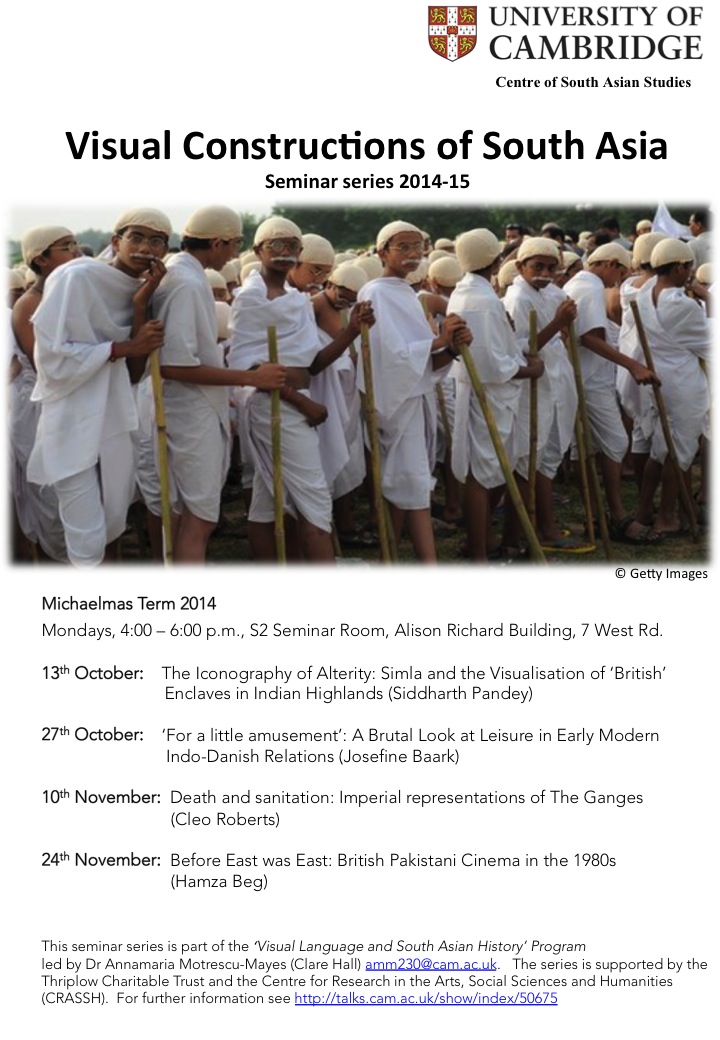‘For a little amusement’: A Brutal Look at Leisure in Early Modern Indo-Danish Relations (Josefine Baark)
Duration: 1 hour 5 mins
Share this media item:
Embed this media item:
Embed this media item:
About this item

| Description: |
This talk is part of the 'Visual Constructions of South Asia' seminar series supported by the Cambridge-India partnership (http://www.cambridge-india.org) and by the Thriplow Charitable Trust. It acts as a sequel to the ‘Visual Anthropology and Contemporary South Asian History’ Conference (http://www.crassh.cam.ac.uk/events/25024) and comprises 12 two-hour seminars offered fortnightly, i.e. four seminars per term, during the 2014-15 academic year.
The aims of this seminar series are twofold. First, to introduce Cambridge (under-, postgraduate) students, academic staff, researchers at different career stages and visiting scholars to the ways in which visual research methods support the development of new perspectives on South Asian history and culture. Second, to align the University of Cambridge prospectus to contemporary developments and programs in visual culture and South Asian studies – programmes already offered by all other major international universities. This seminar series is part of the ‘Visual Language and South Asian History’ Programme led by Dr Annamaria Motrescu-Mayes. The Programme also includes the annual course on ‘Visual Rhetoric and modern South Asian history’ (University of Cambridge, http://talks.cam.ac.uk/show/index/50672), the annual course and workshop ‘Visual Rhetoric and South Asian gender studies’ (in collaboration with the Centre for Women’s Development Studies and Lady Shri Ram College, Delhi), and the annual course and workshop ‘Teaching and learning modern South Asian history with visual research methods’ (in collaboration with the Azim Premji Foundation and University, Bangalore). Each seminar takes place in S2 seminar room, Alison Richard Building, 7 West Road, Cambridge, between 4:00 – 6:00p.m. The seminar dates in Michaelmas term are 13th and 27th October, and 10th and 24th November 2014. The seminar dates in Lent term are 19th January, 2nd and 16th February, and 2nd March 2015. The seminar dates in Easter term are 27th April, 11th and 25th May, and 8th June 2015. |
|---|
| Created: | 2014-11-11 22:54 |
|---|---|
| Collection: | 'Visual Constructions of South Asia' seminar series (Michaelmas 2014) |
| Publisher: | University of Cambridge |
| Copyright: | Dr A.M. Motrescu-Mayes |
| Language: | eng (English) |
| Distribution: |
World
|
| Keywords: | Tranquebar palampore; Southern India; Danish royalty; |
| Explicit content: | No |
| Abstract: | A beautifully painted textile, known as the Tranquebar palampore, has sat unstudied in the Danish Design Museum for a little less than a century. At first glance, it depicts a world of violence: An elephant runs rampant, leaving a trail of mangled corpses behind it, Danish soldiers fire canons, while a woman trains her gun at a fleeing deer and a man stabs a squealing pig through the heart. Hence, although little was known of its patronage or arrival in Denmark, it has been unanimously used by Danish historians as an illustration of early modern Danish military ‘dominance’ in Southern India. This is a fallacy. At closer observation, a world of both Danish and Indian royalty and splendour reveals itself alongside a leisurely, early modern and decidedly everyday brutality. My paper will reveal previously unrecognized primary evidence that suggests the textile was commissioned by the Maratha ruler, Tukkoji I of Thanjavur. Moreover, this visual evidence will shed important light on the rituals and ceremonies associated with gift giving and tribute in early modern South Indian courts. Ultimately, the textile provides a richly detailed glance into the world of diplomatic relations between Europe and India in the early eighteenth century. |
|---|---|

